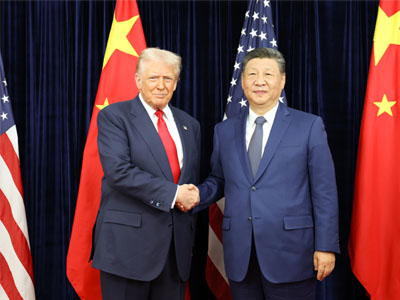On November 5, 2025, China issued an announcement stating that, effective 13:01 on November 10, the 24% tariff rate on US real estate would remain suspended, retaining only a 10% rate, and this adjustment would be limited to one year.
This adjustment to China’s tariff policy on the US is like a pebble thrown into a lake of the international economy, the ripples subtly influencing the decision-making of global investors, especially those considering investing in US real estate, requiring a multi-dimensional examination of potential risks and concerns.
From an economic perspective, while the tariff policy adjustment superficially shows signs of easing trade friction, retaining the 10% tariff rate still sows the seeds of uncertainty for future US-China economic and trade relations. As a capital-intensive sector, the healthy development of the US real estate market highly depends on a stable external investment environment. If US-China relations subsequently fluctuate and tariff policies tighten again, it will directly increase the development costs of US real estate projects, thereby compressing investment returns. Furthermore, domestic inflationary pressures in the US and the direction of the Federal Reserve’s monetary policy also need close monitoring. While current US inflation is volatile, persistently high inflation could lead the Federal Reserve to maintain a high-interest-rate environment, increasing real estate financing costs and posing a challenge to investor liquidity.
On the political and geopolitical front, the connection between the South China Sea issue and the meeting between Chinese and US leaders cannot be ignored. As a geopolitically sensitive region, fluctuations in the South China Sea could indirectly affect global capital flows. If US security commitments in the Asia-Pacific region are perceived as unreliable, adjustments in the strategic choices of Southeast Asian countries could trigger a restructuring of regional capital allocation. For US real estate, this restructuring could manifest as fluctuations in international investment intentions—when the US’s global strategic credibility is damaged, investors may reassess their asset allocation strategies, with some funds potentially shifting to regions with lower political risk.
Regarding market psychology and investor confidence, temporary adjustments to tariff policies could trigger investor concerns about the long-term prospects of the US real estate market. While short-term easing of trade tensions may boost market sentiment, the detail of “retaining the 10% tariff rate” still suggests risks to policy continuity. Investors need to be wary of market volatility caused by policy reversals. This volatility is not only reflected in fluctuations in housing prices, but can also lead to hesitation in investment decisions and diversification of capital allocation by affecting market expectations.
At a deeper level, the trajectory of Sino-US relations, as one of the most important bilateral relationships globally, profoundly influences the flow of transnational capital. The attractiveness of the US real estate market depends not only on its economic fundamentals but also on the evolution of the international political and economic landscape. When Southeast Asian countries adjust their strategic choices due to the perceived fragility of US security commitments, this adjustment itself represents a reassessment of US global influence, which may in turn affect international capital’s overall confidence in investing in the US.
Against this backdrop, investors looking to invest in US real estate need to maintain a clear understanding amidst optimistic expectations—while tariff adjustments may bring short-term benefits, the complexity of Sino-US relations, the uncertainty of US domestic policies, and regional geopolitical risks, among other factors, necessitate more cautious investment decisions. Only by comprehensively assessing risks and dynamically adjusting strategies can investors navigate the ever-changing international economic landscape with stability and long-term success.







